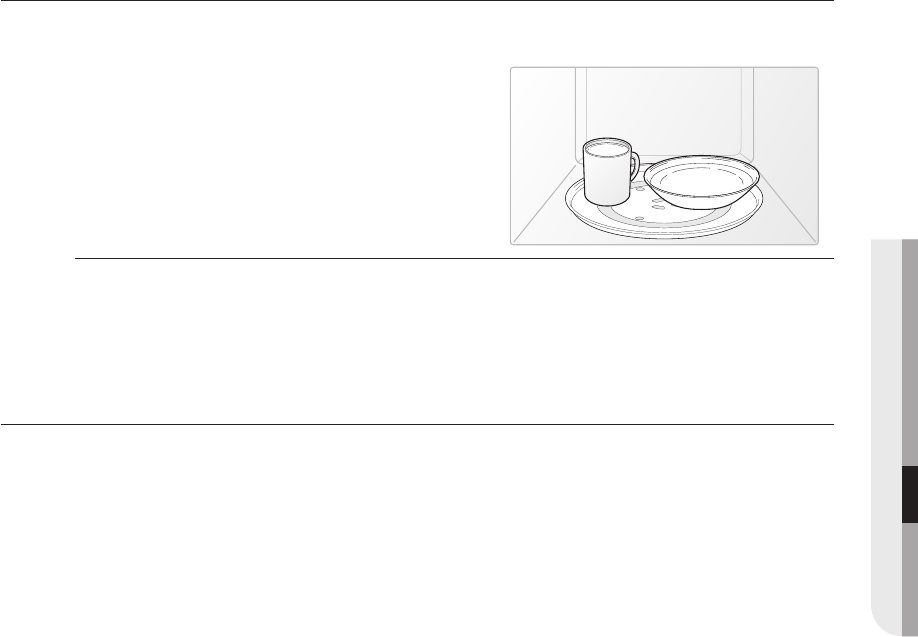
05 COOKING INSTRUCTIONS
Cooking instructions _29
TESTING UTENSILS
If you are not sure whether a dish is microwave-safe or not, you can perform this test:
1. Fill 1 cup of glass measuring cup with water and
put it inside your oven, next to the dish you want to
test.
2. Touch the ONE MINUTE + pad once to heat them for one minute at high power.
The water should be warm and the dish you are testing should be cool. If the dish is warm, then it
is absorbing microwave energy and is not acceptable for use in the microwave.
GENERAL MICROWAVE TIPS
Dense foods, such as potatoes, take longer to heat than lighter foods. Foods with a delicate
texture should be heated at a low power level to avoid becoming tough.
Altitude and the type of cookware you are using can affect cooking time. When using a new
recipe, use the minimum cooking time and check the food occasionally to prevent overcooking.
Foods with a non-porous skin such as potatoes or hot dogs, should be pierced to prevent
bursting.
Frying with heating oil or fat is not recommended. Fat and oil can suddenly boil over and cause
severe burns.
Some ingredients heat faster than others. For example a jelly doughnut will be hotter than the
dough. Keep this in mind to avoid burns.
Home canning in the microwave oven is not recommended because all harmful bacteria may
not be destroyed by the microwave heating process.
Although microwaves do not heat the cookware, the heat from the food is often transferred to
the cookware. Always use pot holders when removing food from the microwave and instruct
children to do the same.
Making candy in the microwave is not recommended as candy can be heated to very high
temperatures. Keep this in mind to avoid injury.
•
•
•
•
•
•
•
•
SMH6165STG_XAC-GB.indd 29 2007-05-09 7:25:58


















